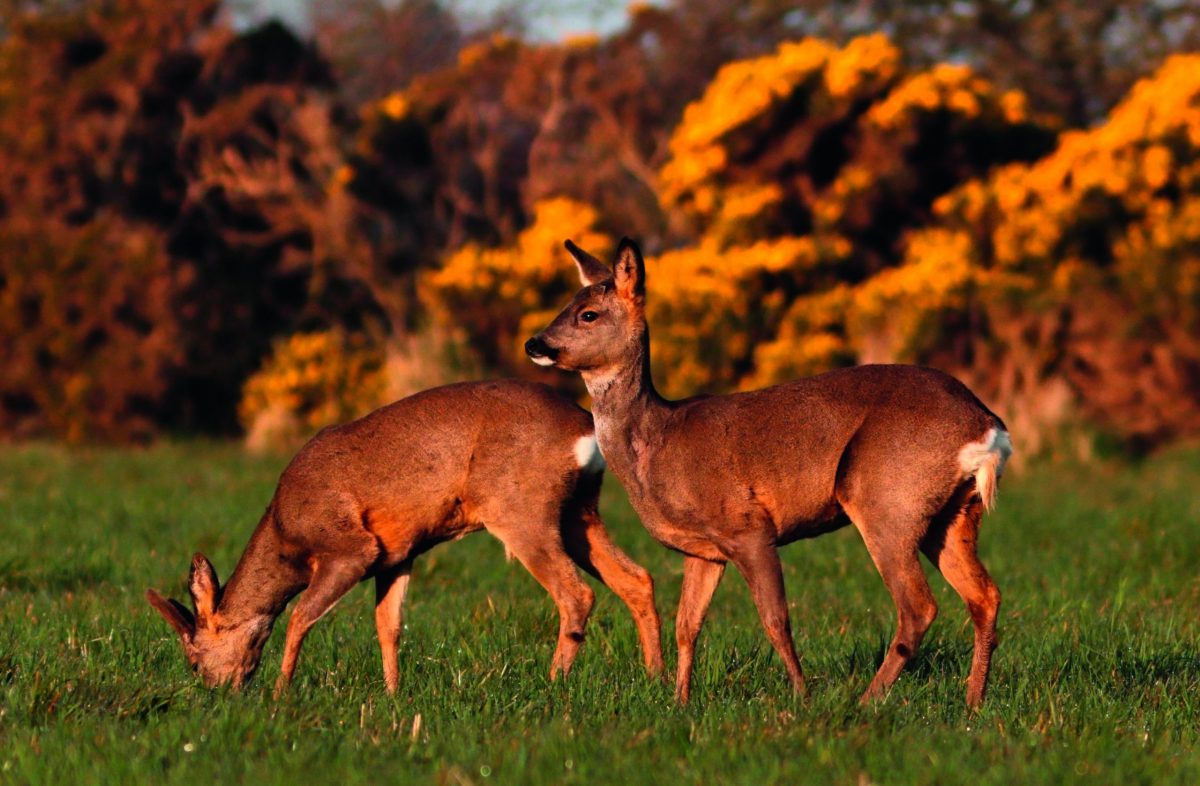Taking advantage of the longer days for roebuck culling
The longer days are an opportunity to crack on with the roebuck cull, picking out weaker twins and any bucks with obviously uneven antlers

Using land for tree planting and solar panels means there is less food and space available for the foraging roe
As the days are longer now, there’s more time to get stuff done in the middle of the day. Our estate rifle range is up and running again for use by private clubs or as hourly sessions overseen by yours truly. (Click here to get some ideas for the best stalking kit).
Another important job at this time of year is getting round all the high seats and making a record of their condition, checking the straps that attach them to the trees and amending anything should it be required. Of course, we make an inspection every time we use them, but a written record is required annually as a minimum. (Want to know how to build a high seat? Click here)
For fixing the seats to the trees, I opt for a heavy-duty ratchet strap, followed by a thinner ratchet strap to pull the main strap as tight as possible. It’s unlikely they will ever break, but it’s important to loosen them once a year and retighten them, as the tree will have started to grow around the high seat frame where it’s in contact with the trunk.
The next few months are also a better time to undertake any work required in our larder as we are shooting fewer deer than in the winter season. This is a case of repainting the inside and addressing any maintenance issues. Hopefully, we will get the interior clad this summer, removing the need for redecorating every few years.
We’re several weeks into the 2022 roebuck season and, through April, we’d usually be cracking on with the cull. During the first month of the season, the roe are still bunched up in their winter family groups, making it easy to find them out in the middle of fields in the sunshine. It’s a good opportunity to look over twin bucks and to try to shoot the poorer of the pair.
In East Anglia, with smaller roebuck heads than other parts of the UK, we are looking to take bucks with single spikes or obviously uneven antlers, whether it’s main beam length or the size of any points coming off them. Our roe heads are usually narrowly set when looking front-on, so we look to leave any bucks with antlers spread apart. I’ll take bucks of any age that have uneven antlers and bucks that have heads I consider to be genetically non-typical.
We take out bucks with poor body condition, as these won’t produce decent antlers. This includes undersized buck kids that will sometimes only be starting to show pedicles. A number of our non-typical bucks are of interest to clients. If we can organise a client looking to add to their abnormal roe collection, we will get them over.
We would usually take one-third of our buck cull in April and we try to finish at the end of August, leaving me plenty of time to look round the red stags before the rut in the autumn. We are a little behind, mainly due to the weather. Cold winds have made the roe lay up in the woods, where there is plenty of food available from the spring flush. The estate farm cropping has also impacted the number of grazing fields.
We are planting trees for carbon capture, so some areas of formerly arable land are cultivated ready for that, following the addition of deer-proof fences. This, combined with a large area of solar panels, is reducing the amount of food and living space for the deer. It’s not ideal from my perspective, but a necessary change in land use for a modern estate looking to secure its financial future in uncertain times.








